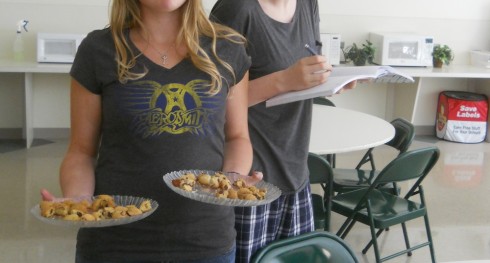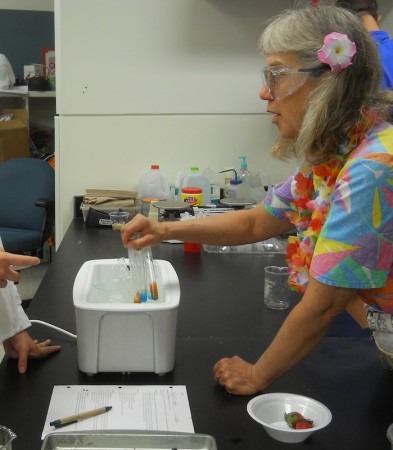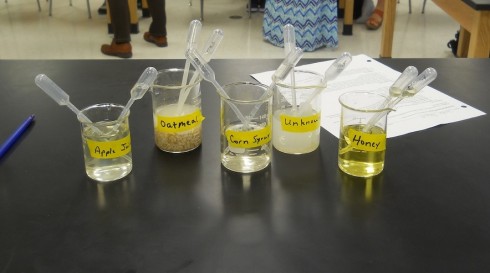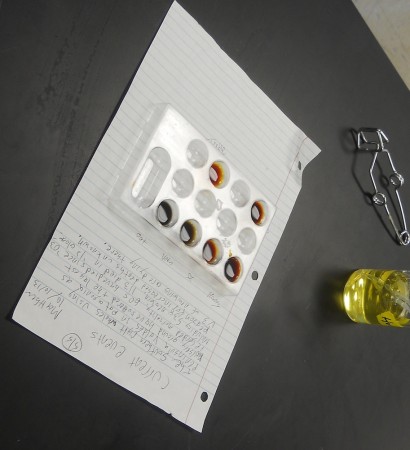An excellent overview of proteins from Dr. Kiki Sanford of Food Science. Of particular importance: denaturation.

Middle and High School … from a Montessori Point of View

My chemistry students did a little experiment to investigate the effect of varying baking soda amounts on cookies. They did four batches of cookies based off of the recipe on the back of a bag of chocolate chips. The batches used:
The last batch used orange juice for its acidity. We hypothesized that more baking soda, and more acidity, would increase the size of the cookies, making them fluffier. The hypothesis was supported by our rather tasty evidence.

Although our focus was on the physical chemical reaction of the baking soda (sodium bicarbonate) and acid to produce the carbon dioxide bubbles that make the cookies rise, the making of the cookies also allowed us to talk a little about the food science behind the role of the flour. Specifically, we discussed the long chain gluten proteins that stretch out and trap the bubbles. We’ll talk a bit more about this next time when we make bread.

The standard biology-class test for simple sugars is to mix equal parts of Benedict’s solution and your sample solution, then heat it up in a hot water bath (80-100 ºC) for about five minutes. If there are simple sugars the mixture will turn from blueish green to reddish orange.

Simple sugars are those basic building blocks (monomers), which are chained together to form the more complex sugars and starches. The simplest are the monosaccharides (mono=one and saccharide=sugar) like glucose and fructose. Glucose is a chain or ring (see Figure 2) of six carbon molecules with the chemical formula C6H12O6. If you link two glucose molecules together, you get a disaccharide (di-two), which is called maltose.

Ms. Mertz did this experiment with her biology class last week using apple juice, oatmeal, corn syrup, honey, and an unknown as samples.

The biology class also tested for starch. Starches are really long chains of sugar molecules called polysaccharides. The simple sugar, Benedict’s solution test does not pick them up because the solution only reacts at the ends of the molecule, and with the long chains of the starch there aren’t that many sites for reactions.

The test for starch is to add a few drops of potassium iodine solution to your sample. Starch turns the resulting solution a bluish black.

Scientific American has an article on “The Scientific Secret of Fluffy Pancakes” that nicely covers the chemistry of gluten. The article includes a recipe, but I tend to prefer buttermilk pancakes (Cook’s Illustrated has a great buttermilk pancake recipe that I find tastes even better if you leave out the sugar).
My wife has been experimenting with gluten-free pancakes and I’ve discovered that I like hers even better because of all the ground nuts it includes. However, in the gluten-free recipes, crucially, Xanthan gum is used to replace the gluten in capturing the carbon dioxide bubbles created by the baking powder reacting with the acid in the recipe. While the gluten is sensitive to how much the batter is mixed (stretching out the proteins), the quantity of Xanthan gum is more important in the gluten-free recipes.
↬ Maggie Eisenberger.